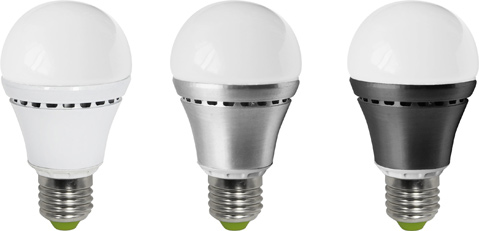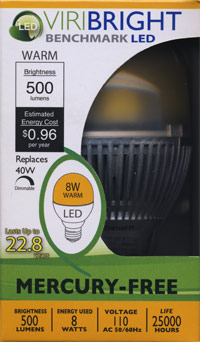Green Your Crib: Satisfying Lighting Saves Money, Too

There are many suggestions I could make about saving energy, water, and dollars to reduce toxins, waste, and anxiety while improving comfort and well-being in your home. But let’s focus on one important area around which there is much confusion: lighting.
We all know that CFLs (compact fluorescents) save energy but also contain mercury, a not insignificant environmental drawback. How about LEDs (light emitting diodes)? These save even more energy than CFLs and have claims of longevity equal to or greater than CFLs.
Change is occurring rapidly in the LED field, some of it good, some not so good. If you tried an LED two or more years ago and were not happy with the results, I suggest you give this technology another go.
Today, most LEDs are made in China, making quality considerations paramount if a bulb is to last for its advertised life expectancy. Price has been a deterrent in the past but is less so today. Many LEDs can now be purchased for between $10 and $20. The technology continues to improve, the price to decline, but quality is being sacrificed in a price race to the bottom. Many people are purchasing LEDs on price alone but are buying inferior quality.

When selecting an LED replacement lamp, the best advice I can offer the consumer is this: Learn how to read and understand the “Lighting Facts” label. (See the image.) The two most important specifications to review are the following:
Color Rendering Index (CRI): Look for a CRI of 90 or higher. While 80 is most commonly available, this rating is linked to uneven quality and harshness of color.
Correlated Color Temperature (CCT): Most residential customers prefer 2,700K, which most closely emulates incandescent coloring. You may encounter 4,000K and 5,000K LEDs advertised as “daylight.” This may sound appealing at first glance, but most users find LEDs in this “whiter end” of the color spectrum too stark for residential use.
If the replacement bulb does not have a “Lighting Facts” label, that should be a warning of a product to avoid. Energy Star, however, is a label that helps with quality.
Most, but not all, LED replacement lamps are dimmable. If dimming is desired, be sure to check for a “dimmable” symbol on the packaging.
One line of LED lamps that has proved to offer both high-quality light and good long-term durability is the Cree TW Series, but check the CRI rating, because now many are only in the low 80s; 90+ CRI LED lights at EarthLED.com is another excellent source for high-quality LEDs.
You should buy one LED and try it out for color quality in a place where the light is on four or more hours a day. The payback time will be about six months.
On a final note, be advised that many inexpensive and “off-brand” LED lamps often burn out prematurely and fall short of their advertised life span. The guidelines above should help avoid these pitfalls.
Dennis Allen is chair of Allen Construction, an employee-owned company committed to building and operating sustainably. He also serves as chair of the Dean’s Council at the Bren School of Environmental Science & Management at UCSB and as a boardmember of the Community Environmental Council.



